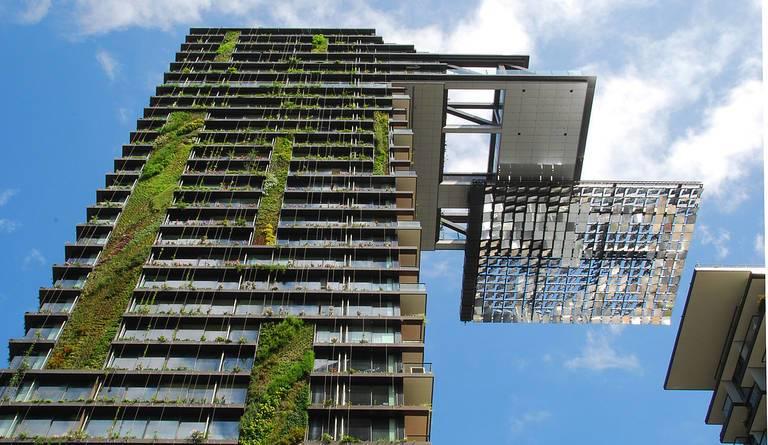
By Scott Huntington
Early indicators and hype have led us to believe the green revolution is indeed underway. However, the transition has been a slow one — there was no '90s tech boom and no industrial revolution of green tech. Instead, the changes have come in dribs and drabs: LED lights replacing the standard incandescent option, a slow creep toward better gas mileage and localized movements to instruct sustainable living and practices. The large-scale, sweeping changes have yet to commence — if they ever do.
A few roadblocks traditionally stand in the way of this possible shift. First, there is a high perceived cost of entirely switching systems. Sustainable and green technology typically still have one of two limitations: they’re either expensive or unreliable. For their buildings, companies tend to rely on the old standbys of metal, glass and concrete, as well as the norms of gas heating and coal-sourced electricity. For many businesses around the country, cost reduction is king.
In spite of this philosophy, some companies have begun a steady shift toward more sustainable buildings.
The Sustainable Option
In an increasingly fast-paced and interconnected market, building green has a few clear advantages.
First — and perhaps most obviously — it’s beneficial for the environment. The nature of competition has forced businesses to evaluate everything from a cost-benefit point of view, and this has traditionally kept sustainable practices from widespread adoption. Today, the key to success is “disruption” — impacting target fields and changing the game. A company that can evoke an image of significant change is likely to find success in tight areas.
For some companies, the differentiation has come in the form of sustainability — setting themselves up as pillars in the community through sustainable practices and community outreach. For many smaller companies, pulling their image away from the corporate in favor of the community has been a hugely effective tactic that results in niche markets and the ability to sell a product for reasonably higher prices.
Employment, too, draws some benefits from branding as a sustainable company. With Millennials graduating college and entering the workforce, the first generation grown on the promises of a sustainable world will likely have a more significant impact on the state of the workplace. The collective expectations of this generation will become more and more the status quo, and companies hoping for continued success will need to start converting to sustainable, flexible workplaces.
In other words, the shift toward sustainable buildings is one of slow inevitability. With the entrance of the millennials, a need for sustainability will likely gain prominence, and several companies have already capitalized on the future trend. Green concrete, for instance, has already become the main product of several companies. Precast concrete can be made from recycled materials, and features even greater durability and reliability than more traditional options.
In the case of buildings, the long-lasting and environmentally sound models have been drawing a considerable amount of attention. Those companies that look toward the future are already shifting their building projects to more sustainable — and often beautiful — ventures.
A Concrete Future
A tremendous amount of uncertainty still surrounds the prospects of sustainable buildings. Unfortunately, the clear majority of new buildings are still built using traditional methods of concrete, steel and glass. In a strange turn, recent scientific research has centered around transforming glass back into the sand that it originally came from, citing a shortage of sand in certain regions.
However, a couple of factors seem to be pushing us in the direction of entirely green cities. Millennials — the most environmentally-conscious generation yet — should become 50% of the workforce within the next decade, and they've already made their preferences for green tech clear. Likewise, companies have begun developing competitive, sustainable models for building materials, which will become more cost-effective in time. With a small push, the sustainable revolution could finally be underway very soon.
TriplePundit has published articles from over 1000 contributors. If you'd like to be a guest author, please get in touch!














